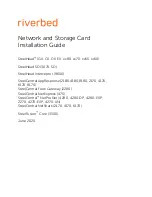
Introduction
•
7
1.4 Software Support
ADLINK provides versatile software drivers and packages for users’ dif-
ferent approach to building up a system. ADLINK not only provides pro-
gramming libraries such as DLL for most Windows based systems, but also
provide drivers for other software packages such as LabVIEW
®
.
All software options are included in the ADLINK CD. Non-free software
drivers are p rotected with licensing codes. Without the software code , you
can install and run the demo version for two hours for trial/demonstration
purposes. Please contact ADLINK dealers to purchase the formal license.
1.4.1
Programming Library
For customers who are writing their own programs, we provide function
libraries for many different operating systems, including:
D2K-DASK:
Include device drivers and DLL for Windows 98,
Windows NT and Windows 2000. DLL is binary compatible across
Windows 98, Windows NT and Windows 2000/XP. This means all
applications developed with D2K-DASK are compatible across
Windows 98, Windows NT and Windows 2000/XP. The developing
environment can be VB, VC++, Delphi, BC5, or any Windows pro-
gramming language that allows calls to a DLL. T he user’s guide and
function reference manual of D2K-DASK are in the CD.
(\\Manual_PDF\Software\D2K-DASK)
D2K-DASK/X
: Include device drivers and shared library for Linux.
The developing environment can be Gnu C/C++ or any program-
ming language that allows linking to a shared library. The user's
guide and function reference manual of D2K-DASK/X are in the CD.
(\Manual_PDF\Software\D2K-DASK-X.)
1.4.2
D2K-LVIEW: LabVIEW
®
Driver
D2K-LVIEW contains the VIs, which are used to interface with NI’s Lab-
VIEW
®
software package. The D2K-LVIEW supports Windows
98/NT/2000/XP. The LabVIEW
®
driver is shipped free with the board. You
can install and use them without a license. For detailed information about
D2K-LVIEW, please refer to the user’s guide in the CD.
(\\Manual_PDF\Software\D2K-LVIEW)
Summary of Contents for NuDAQ DAQ-2500 Series
Page 3: ......
Page 26: ...Operation Theorem 17...
















































